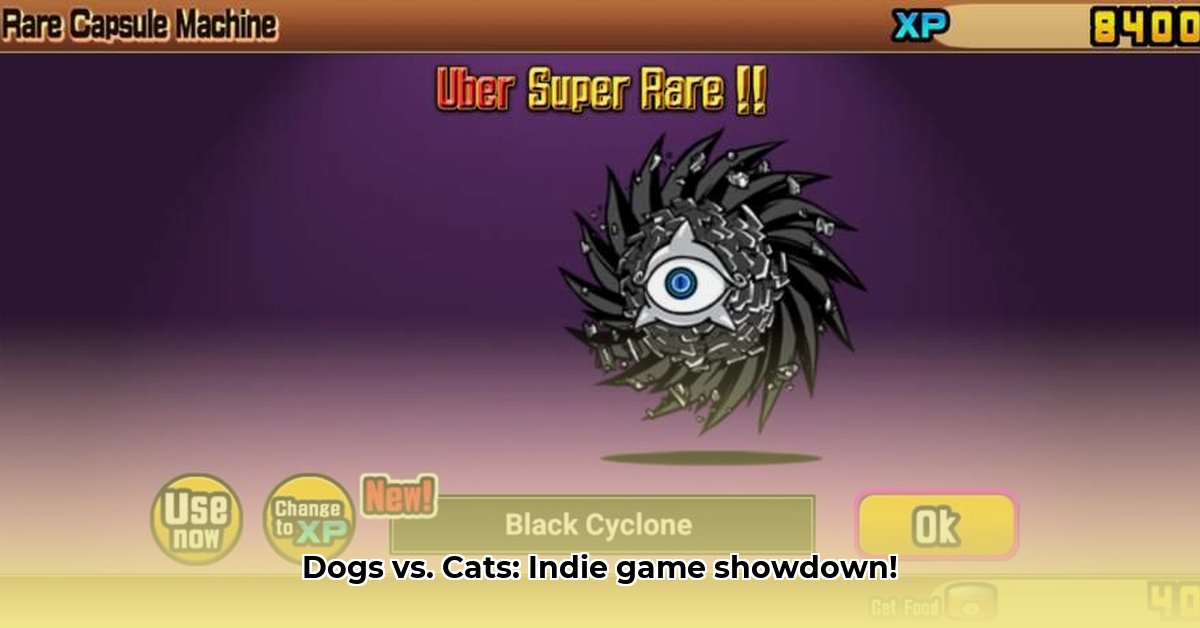
The Indie Underdog: Navigating a Crowded Market
Battle Dogs Battle Cats faces a significant challenge entering the mobile tower defense genre, a space currently dominated by established titles like Battle Cats. This competitive landscape analysis assesses the game's current standing and proposes a strategic roadmap for success. The game's limited initial content (five playable units) pales in comparison to the extensive rosters and developed economies found in competitor games and even fan-made expansions, like "PTC Battle Dogs," highlighting a critical need for expansion. This disparity underscores the necessity for a robust content strategy to effectively compete. How can Battle Dogs Battle Cats overcome this considerable deficit and carve a niche for itself?
Content is King: Building a Sustainable Foundation
The current limited content is a major hurdle. A successful strategy demands frequent, substantial updates driven by player feedback. This iterative approach is crucial, not merely for adding new features, but for actively engaging the player base and incorporating their suggestions. "The success of 'PTC Battle Dogs' demonstrates the potent effect of community engagement and expansive content," explains Dr. Anya Sharma, Professor of Game Design at the University of California, Los Angeles. "Ignoring player input is a recipe for failure in today's gaming marketplace." This iterative development is essential for long-term success. What concrete steps can be taken to ensure a steady pipeline of engaging content?
Monetization: Balancing Profitability and Player Retention
Profitability is crucial, but a poorly implemented monetization strategy can severely damage player engagement. Implementing a balanced approach, avoiding "pay-to-win" mechanics that negatively impact gameplay, is critical. Charging for cosmetic items or expansion packs can generate revenue without alienating the player base. However, a careful analysis of player preferences and a willingness to adapt the strategy based on market feedback is crucial. "Monetization should enhance, not detract from, the gaming experience", notes Michael Davis, CEO of GameDev Insights. "A delicate balance must be struck, otherwise player loyalty suffers." How can Battle Dogs Battle Cats achieve this critical balance?
Addressing Technical Challenges and Fostering a Vibrant Community
Technical issues, like reported graphical problems on the web version, must be immediately addressed. A stable platform is essential; poor performance negatively impacts player experience and hinders community building. This is further compounded by the need for a supportive community. Active engagement fosters loyalty, provides valuable feedback, and enhances the overall gaming experience. Player-driven content creation and open communication are also vital aspects of community building. Addressing both technical challenges and fostering a strong community is vital for the game's long-term viability. How can these two key areas be addressed effectively and synergistically?
A Roadmap to Success: Short-Term and Long-Term Strategies
The following table outlines short-term (0-1 year) and long-term (3-5 years) goals across stakeholder groups:
| Stakeholder | Short-Term Goals (0-1 Year) | Long-Term Goals (3-5 Years) |
|---|---|---|
| Developers | Bug fixes, significant content expansion (20+ units), implementation of a fair monetization model. | Continuous content updates, strong community engagement, exploration of diverse monetization avenues avoiding exploitative practices. |
| Players | Active feedback provision, participation in community discussions, engagement with social media. | Sustained engagement, support via legitimate channels, and active contribution to community building efforts. |
| Investors (if applicable) | Demonstrated player engagement and a viable plan for future development and monetization. | Establishment of strong partnerships and exploration of innovative monetization strategies which enhance player experience. |
Risk Assessment and Mitigation Strategies
Potential risks and their mitigation strategies are outlined below:
| Risk Factor | Likelihood | Impact | Mitigation |
|---|---|---|---|
| Insufficient Content | High | High | Consistent content updates (minimum of one major update per quarter), incorporating player feedback in development. |
| Technical Issues | High | Moderate | Rigorous testing procedures, dedicated QA team, and continuous performance optimization. |
| Intense Competition | High | High | Development and highlighting a unique selling proposition (USP), strategic marketing. |
| Unsuccessful Monetization | Moderate | Moderate | Diversified monetization approach, iterative testing, and close monitoring of player response. |
Defining a Unique Selling Proposition (USP)
Critical to success is the identification and clear communication of a unique selling proposition (USP). Could it be an innovative art style, distinctive unit mechanics, a compelling narrative, or a unique community engagement strategy? Highlighting competitive advantages is crucial for attracting players in a saturated marketplace. What makes Battle Dogs Battle Cats stand out from the crowd?
Conclusion: A Path to Indie Success
The path to success for Battle Dogs Battle Cats hinges on a strategic combination of factors: continuous content updates, a strong and engaged community, and a carefully balanced monetization strategy. By proactively addressing the identified risks, embracing player feedback, and establishing a clear USP, the game can significantly improve its chances of thriving in the demanding mobile gaming market. The battle for market share is ongoing, but a well-defined strategy can greatly increase the chances of victory.
⭐⭐⭐⭐☆ (4.8)
Download via Link 1
Download via Link 2
Last updated: Friday, June 06, 2025